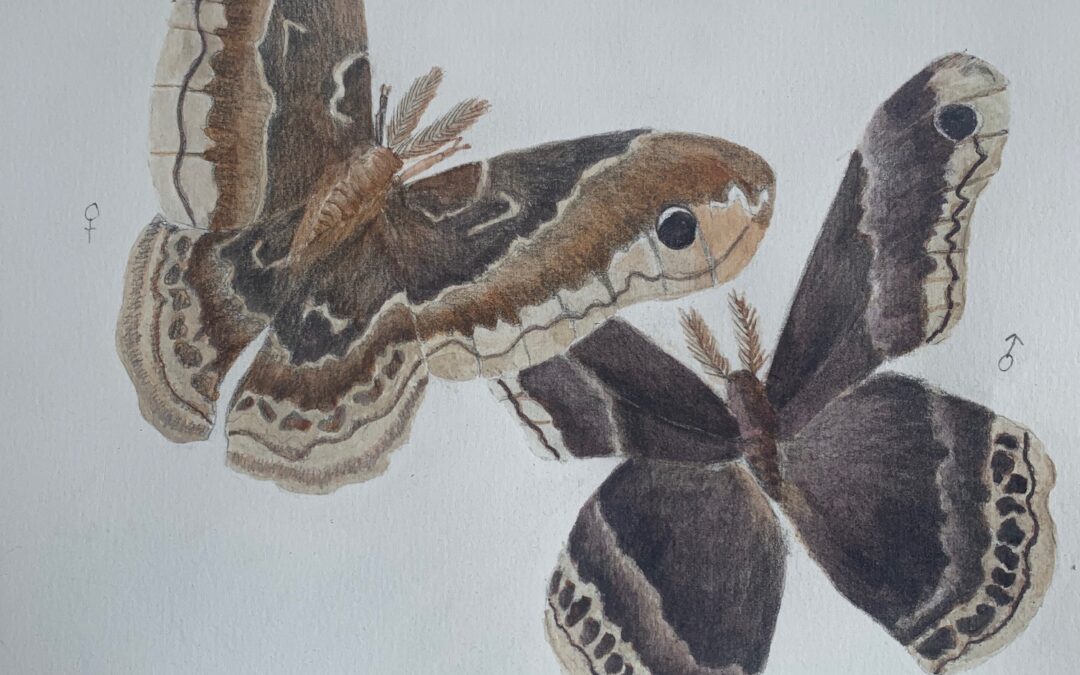You remember what Lepidoptera are, right? They’re the butterflies and moths that engage us in their beauty and feed most of the baby songbirds of the world with their caterpillars.
A few months ago we talked about Spicebushes, Pawpaw trees and Bladder nut trees all growing beneath larger trees, especially oaks, where I walk in West Virginia. These are the understory trees that we tend to ignore.
I’m back in West Virginia again this July 4 for a family gathering. I love seeing family, and I love seeing the butterflies that are propagated here by eating the native plants. We have many white oaks, which seem to thrive here in the eastern extension of West Virginia. Our ancestors also planted white oaks, because they are tall and stately. And they do protect and feed many birds and mammals.
But the understory trees were largely mowed. Why would anyone want a 25 foot tree in their yard unless it produced apples? The place to find the pawpaws, bladder nuts and spicebushes is along the creek, where mowing and plowing were impossible and where they were ignored and thrived.
A few weeks ago we talked about the Paw Paw Sphinx Moth and the Zebra Swallowtail. Those 2 lepidoptera lay their eggs on the paw paw tree. Mixed in with the pawpaw trees are spicebush trees. The beautiful Prometheus Moth (Callosamia promethea) and the Spicebush Swallowtail (Papilio troilus) lay their eggs on the spicebush. The leaves give off a gentle spicy fragrance, but otherwise the trees are not notable to most people.
That is not true of the beautiful black and blue spicebush swallowtail with its iridescent turquoise scales and long tail. Or the large velvety Prometheus Moth who comes out in the early evening to mate and lay eggs on the spicebush and sassafras trees. According to Wikipedia, in studies of spicebush swallowtails, their larvae will eat only the leaves from the family Lauraceae. If there are no tree leaves available from this family of trees, they will die. This is certainly strong evidence of the importance of a diverse plant environment to sustain our butterflies.

The family Lauraceae includes many tropical plants with highly spicy leaves such as cinnamon. Lindera, the genus of the spicebush and sassafras trees, have leaves full of phytochemicals which taste bad to many predators. These bad tastes protect the butterflies in much the same way as the monarch is protected from the bad tasting chemicals in milkweed.
The Promethean silk moth is not as fussy as the swallowtail about his/her diet. They eat leaves from several different families of plants. The larvae may eat different plant leaves from their parent and still thrive. These moths like tulip trees (Liriodendron tulipifera), spicebushes (Lindera benzoin) and sassafras (Sassafrass albidum).
The spicebush male moth mimics the coloration of the pipevine swallowtail, which is toxic. The females have a different coloration and do not mimic the pipevine swallowtail. Presumably their brown coloration is safe at night in the trees.
The spicebush moth is in the family of silk moths that use silk to spin their cocoons. Caterpillars of the spicebush moth attach their silk to a small tree branch, wrap a leaf around themselves and form a winter cocoon. Usually the tree branch is too small to hold a predator squirrel or bird. Next winter I will be on the lookout for dead leaves hanging from their favorite trees.
The male moths fly in the late afternoon, while the females fly at night. For this reason, we are unlikely to see these moths. The spicebush swallowtail flies during the day, and is more likely to be conspicuous.
An app on a cellphone to identify plants is a good way to discover some of these understory trees. To the human eye, they are often unremarkable. These lepidoptera are more likely to be flying near their favorite food trees. It is in these small groves that they can find mates and lay eggs that will thrive.


